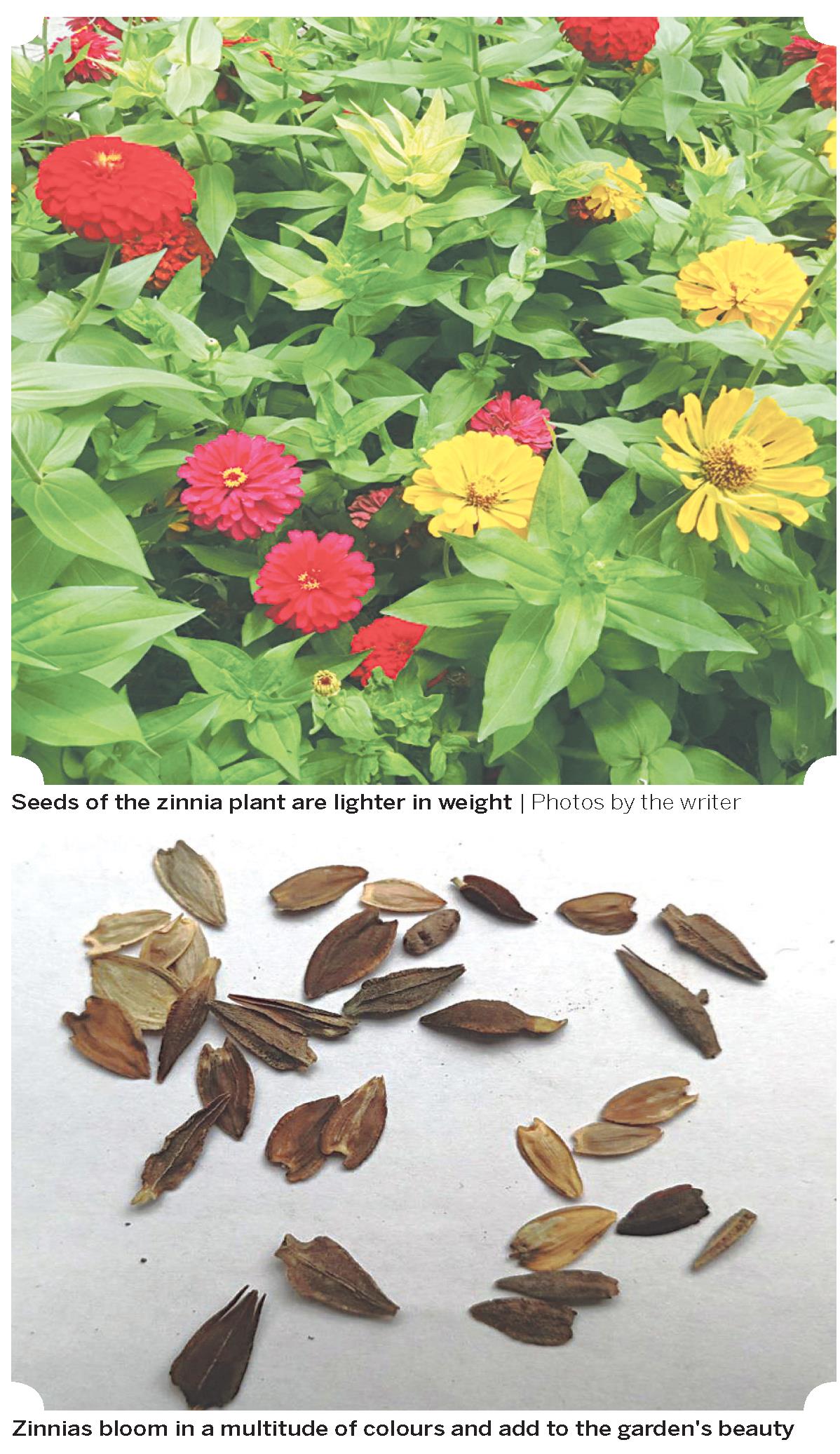ZINNIAS BLOOMING
By Dr Khwaja Ali Shahid
2025-07-13
hile summers in most parts of Pakistan can be sweltering, they do have a silver lining: the wide array of beautiful nowers that one comes across during this season. Zinnia nowers are one of the major headliners among these seasonal nowers, adding colour to their surroundings. The zinnia plant is also easy to grow both inside the house and in a garden making it one of the preferred aesthetic choices for amateur and professional gardeners.
The zinnia nower comes in sharp solid colours of pink, red, yellow, white, purple, maroon and orange, to name a few. The size range of the bloom and plant may also vary, from dwarfs to giants. Zinnias add colour to nower beds, sidewalks, terraces and open spaces. Zinnia seeds can be sown and the plant can be grown in almost any type of container and growing space.
The seeds of the zinnia plant are usually lightweight and paper-like in thickness. They are dry to touch and brownish black in colour. In terms of shape, zinnia seeds are pointed at one end and slightly rounded at another.
Due to their light weight, zinnia seeds must be sown with care.
The gardener must ensure that the potting mix is free of any pebbles and stones, to avoid any unwanted hindrance to the germinating seeds. The potting mix should be watered before sowing the seeds. This helps the seeds to stay in their sowing positions afterwards.
Watering after sowing can cause the lightweight seeds to get washed away from their original positions.
If the seeds are sown in a seedling tray, then one seed should be sown in each seedling spot. If the seeds are sown in a small pot or container, then a few seeds can be sown in the dedicated pot. In case of the latter, the seeds should be carefully sprinkled over the soil surface. Later, it should be covered with a thin layer of gardening soil or compost, while ensuring that none of the seeds get damaged during the process.
Ideally, till the commencement of the germination process, the containershould be covered with a plastic bag, as it will help retain the moisture within.
The container should then be placed in a cool, dry place under the shade.
Before moving the discussion to the next phase of the plant life cycle, it is ideal for the gardener to know the varieties of the zinnia nower, with special emphasis on those that can be easily grown in Pakistan.
The largest-sized bloom comes in the zinnia elegans variety. It is one of the most common and traditionally grown zinnia nower varieties in Pakistan. The plant grows to a height of two to three feet and it is used to make borders of nower beds and garden sidewalks.
Lilliput mix, California giants and canary bird are three of the relatively famous cultivars of zinnia elegans being grown and sold in Pakistan.
Another zinnia variety, the Zahara series (zinnia marylandica), is also extremely popular because of its resistance to disease and its ability to grow in extremely hot and arid conditions. This hybrid variety is also drought-tolerant and usually has a bushy plant.
A short, dwarf-size variety of zinnia is the Thumbelina series, which makes it a perfect fit for growing in small pots. As the name indicates, this small plant is relatively easier to manage and ideal for growing indoors for those who don`t have access to a bigger gardening space. At most, the plant is one foot high and it blooms very quickly. Zinnia Thumbelina is counted among the beginner-friendly nower varieties, and is highly recommended for children and new gardeners.
Zinnia nower seeds are usually sown in a temperature range of between 20 to 25 degrees Celsius. In areas such as Karachi, this temperature would coincide with the month of February.
One popular way is to sow the zinnia seeds in phases. This way, as one batch of seedlings gets ready, another batch is already on its way.
Please send your queries and emails to doctree101@hotmail.com. The writer is a physician and a host for the YouTube channel `DocTree Gardening` promoting organic kitchen gardening




